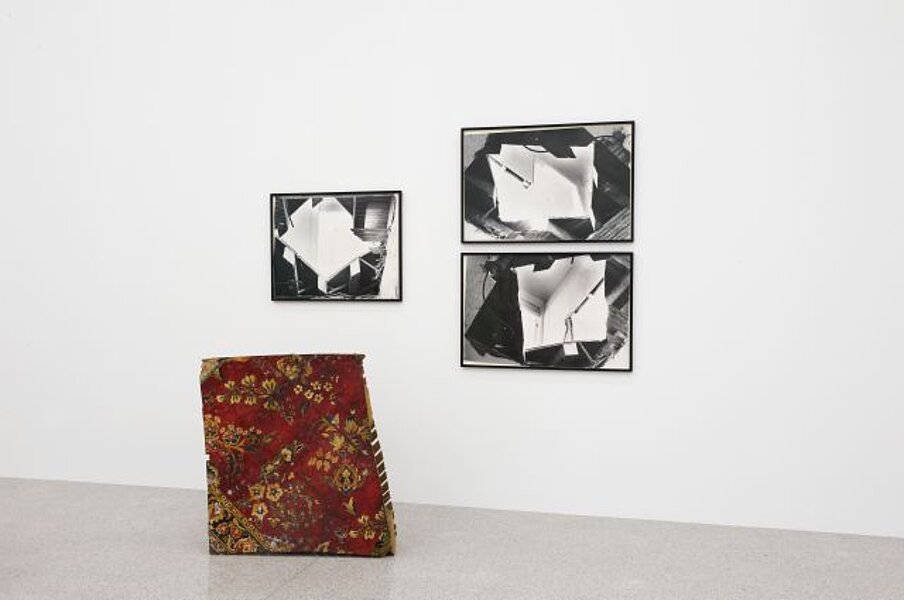
Matta-Clark, Gordon
Bronx Floor
1972
| Object description | Wood, linoleum,b/w photographs |
|---|---|
| Object category | installations |
| Dimensions |
Objektmaß:
height: 63 cm,
width: 100 cm,
depth: 24 cm,
height: 62,5 cm,
width: 93,5 cm,
height: 62 cm,
width: 79,7 cm,
height: 63 cm,
width: 93,5 cm
Rahmenmaß:
height: 65,8 cm,
width: 96,7 cm,
depth: 2,5 cm,
height: 64,8 cm,
width: 82,7 cm,
depth: 2,5 cm,
height: 65,8 cm,
width: 96,7 cm,
depth: 2,5 cm
|
| Year of acquisition | 1978 |
| Inventory number | P 151/0 |
| Creditline | mumok - Museum moderner Kunst Stiftung Ludwig Wien, ehemals Sammlung Hahn, Köln |
| Rights reference | Bildrecht, Wien |
| Further information about the person | Matta-Clark, Gordon [GND] |
| Literature |
museum moderner kunst.SAMMLUNG HAHN Museum moderner Kunst Stiftung Ludwig Wien Museum der Wünsche |
Gordon Matta-Clark is typical of the young generation of artists that critically challenged the ideological principals of minimal art in the 1970s. While the minimalists worked on the basis of the autonomous artwork in the neutral exhibition room, the post-minimalists sharpened awareness of the contexts of art—how it is created and received. Matta-Clark developed his strategy of “unbuilding” with an explicitly political intention. He began by interfering with the demolition of houses in illegal actions. The work on show here comes from the floor of a building in the Bronx in New York City. Matta-Clark’s intervention makes a covert inner structure overt. The documentary photographs provide us with unusual insight into the world of a piece of architecture that has long been destroyed. This work also fulfils the post-minimalist criterion of local specificity. It refers to the location for which and in which it has been created, with which it is inseparably linked. “Unbuilding a house holds innumerable aspects of social conditions, against which I should like to set an example. At first, I want to break through the condition of being locked in, which is not only caused by material necessity, but also by industry, that spreads around cities and suburbs in closed blocks: housing for passive, isolated consumers, practically a captive public.”
© mumok – museum moderner kunst stiftung ludwig wien

